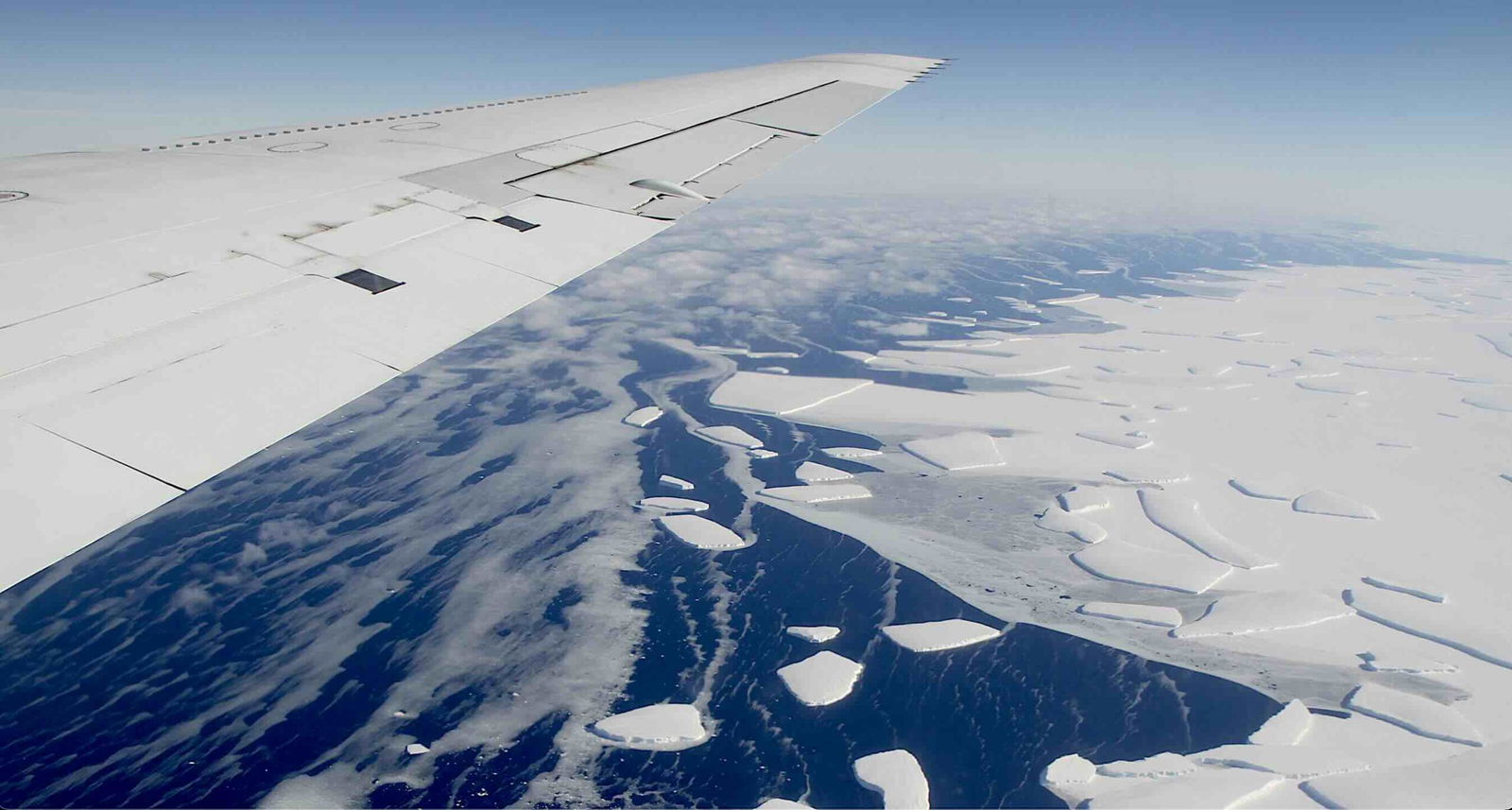Researchers seeking the construction of a massive underwater structure to shield Antarctica’s melting ice sheets from ongoing erosion by seawater could be met with unexpected international challenges, new research reveals.
While scientists debate the logistics of installing a proposed gigantic undersea curtain to protect Antarctic glaciers against melt from warmer seawater they encounter, researchers at Kobe University are looking at a different problem: how the questions of international authority and related security and sovereignty issues might impact such efforts.
Failing to address such issues, the Kobe research team argues, could result in worsening international tensions over the use of Earth’s southernmost continent.
Installing a Protective Curtain in Antarctica
The idea of installing a protective curtain to stave off the rapid melt occurring along the West Antarctic Ice Sheet was initially proposed in January by Finnish researchers, who outlined their plan in a Nature article that proposed an 80 kilometer long, 100-meter-high structure that would protect the glaciers from warmer underground water.
However, initial focus on the feasibility of constructing this massive barrier soon shifted in an entirely different direction.
“What had been a technical discussion among some scientists quickly became a social debate involving the general public,” according to Shibata Akiho, an international law researcher at Kobe University, Japan.
For Shibata and his colleagues, the political implications of the entire debate have been largely overlooked, a fact that could lead to the risk of unintended conflict erupting around a proposal initially aimed at helping address an environmental concern that, if left unchecked, could have wide-reaching global effects.
From Geoengineering to Geopolitics
To address these concerns, Shibata, along with Patrick Flamm, a visiting scholar from Frankfurt’s Peace Research Institute, have outlined the potential social and political issues that could arise from the construction of a massive Antarctic curtain in a new analysis.
“We believe that it was important to publish a paper within one year of the original proposal, before the social debate takes on a life of its own,” the researchers said in a recent statement.
Their findings, detailed in a new policy paper featured in International Affairs, detail how the themes of authority, sovereignty and security, if ignored amid the growing concerns surrounding issues like offsetting the effects of climate change, could lead to significant international problems.
“This paper sheds light on the political and legal ‘shadows’ hidden behind the exciting surface of science and technology,” Shibata said in a statement, adding that he and his colleagues “it is necessary for the members of society to make decisions on the development of these technologies based on a thorough understanding of such negative aspects.”
The Antarctic Treaty System
Past arguments have mostly centered on technical feasibility, while ignoring guidance outlined by the Antarctic Treaty System (ATS) and the international law of the sea regarding the practicality of such ideas. Presently, Antarctic Treaty Consultative Meetings (ATCMs) have yet to take up any of the proposed geo-engineering solutions, but the Kobe researchers believe that could only be a matter of time.
Despite the global system’s challenges, the ATS has maintained an impressive history of functional Antarctic governance. In December 1959, the first twelve countries signed the treaty to protect their scientific operations around the Antarctic. Treaty meetings since then have managed to keep their eyes on science, avoiding discussion of territorial disputes and instead pushing for environmental regulations.
Currently, 29 parties to the treaty are associated with the consulting process, with another 28 signatories that are not directly engaged. Currently, the UN’s Law of the Sea requires it to remain separate from participation in Antarctic governance. Past events like the 1982 UK and Argentinian war, widely recognized as a close call by most researchers, still managed to avoid significant repercussions for Antarctic diplomacy.
While ATS manages to avoid becoming enmeshed in global power struggles, it does engage in environmental concerns. One of its most essential components is the Committee for Environmental Protection. The committee meets annually to focus on the Madrid Protocol, which has been in effect since 1998. During meetings, they view environmental data on the Antarctic, ensuring that members meet their commitments to maintaining the continent as a place for peaceful scientific endeavors.
Still, a mounting push exists to open the continent for bioprospecting and tourism. Tourism has been growing in the region since the 1980s, and since the 1990s, governments have granted patents for the medicinal use of Antarctic plants. Geo-engineering could become one more stressor on a system facing new strain levels.
Authority, Sovereignty, and Security at Stake
Authority may be the most direct issue to a large-scale, long-term geo-engineering project in the Antarctic. Even if such a project could be established, less affluent countries (also those likeliest to experience disappearing shorelines) could cast doubt on the legitimacy of any project by the wealthy countries making up the consulting treaty partners. Any long-lasting decisions must be made in the consulting partners’ home capitols.
While the Antarctic Treaty froze the continent’s current seven territorial claims in place at its signing, that wasn’t the end of the story on sovereignty. The US and Russia still actively administer their economic zones, and even the environmental protections in place may not be entirely altruistic, with some analyses perceiving Antarctic ecological regulations as a backdoor to reaffirming territorial claims.
Finally, even if the curtain project is implemented and succeeds in its objectives, a new major problem could arise in its wake: the planet would now have a global-scale piece of critical infrastructure prone to military targeting. Recent examples, including dams and nuclear power plants in the Ukraine-Russia war, illuminate how quickly critical infrastructure may become an unwanted target, either for aggressive nations or even belligerent non-state actors.
Final Warnings
Although scientists are beginning to consider multilateral viewpoints and the social dimensions of geo-engineering, most are not experts in those fields. To this end, Shibata argues that international political and legal scholars need to weigh in on the plans put forward by scientists.
“Perhaps then the discussion will no longer be about protecting the key principles of the current Antarctic Treaty System while considering this technology,” Shibata says, “but about modifying those key principles themselves.”
The paper “‘Ice Sheet Conservation’ and International Discord: Governing (Potential) Glacial Geoengineering in Antarctica” appeared on November 18, 2024, in International Affairs.
Ryan Whalen covers science and technology for The Debrief. He holds a BA in History and a Master of Library and Information Science with a certificate in Data Science. He can be contacted at ryan@thedebrief.org, and follow him on Twitter @mdntwvlf.

